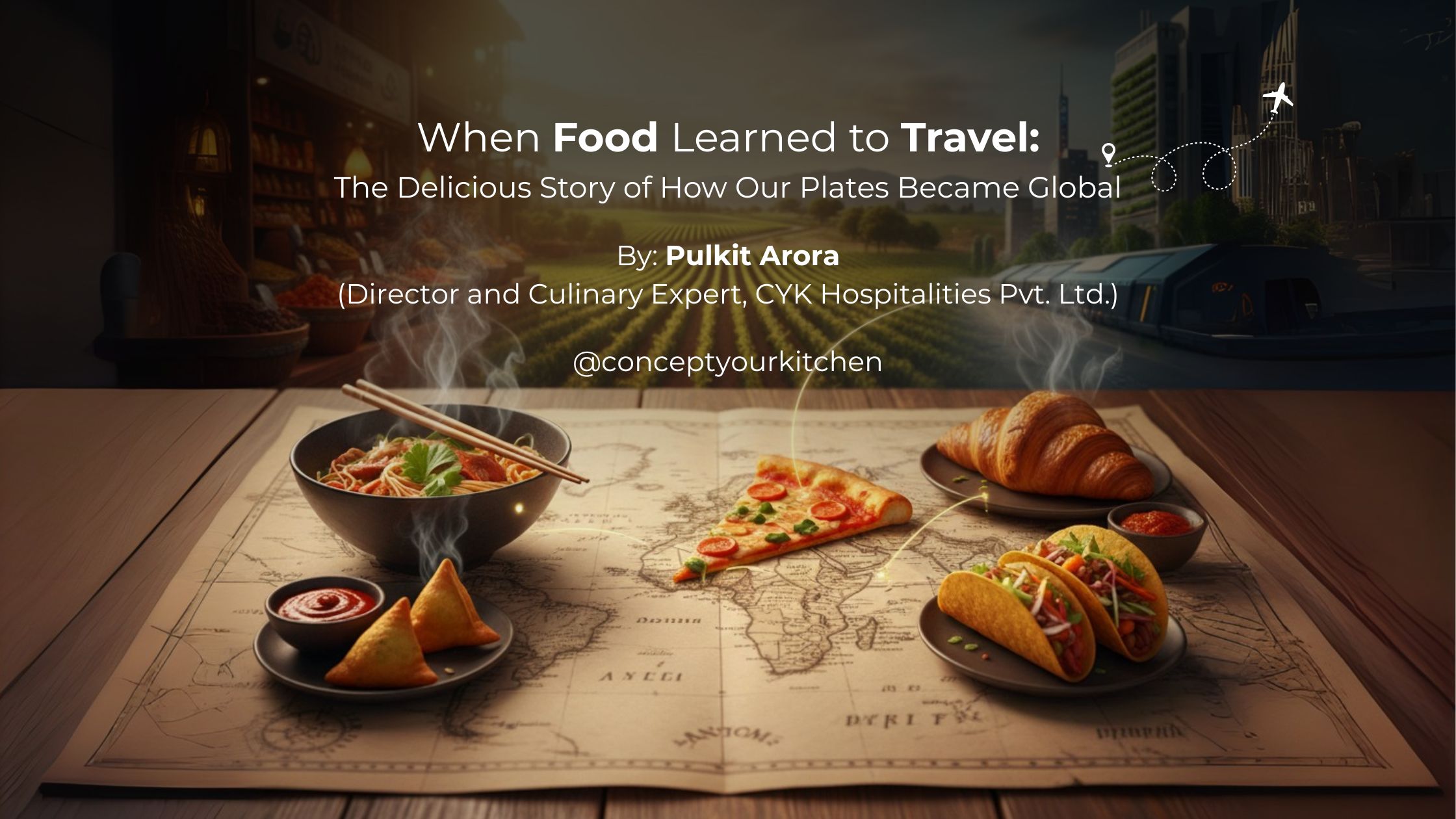
04 Oct When Food Learned to Travel: The Delicious Story of How Our Plates Became Global
Have you ever wondered how a potato, born in the mountains of Peru, became the heart of Irish meals? Or how fiery chilies, once native to Mexico, became inseparable from Indian curries? The food we eat today didn’t just grow where we live; it travelled, sometimes slowly over centuries, suddenly through conquest, trade, or migration. Every dish on your table carries a passport stamped with history.
From Fields to Civilizations
In the beginning, food was local. People ate what the land gave them: wild fruits, grains, and game. Then came farming, and with it, identities: rice fields defined Asia, wheat shaped the Middle East, and maize fed the Americas. Food became culture, ritual, and pride long before it became commerce.
The Spice That Changed the World
As soon as people started travelling, food went with them. Between 200 BCE and 1500 CE, caravans on the Silk Road and ships on the Spice Route carried more than just treasures. They carried flavors. Imagine Europe before pepper, cinnamon, or nutmeg, bland and monotonous. Spices from India, citrus fruits from the Middle East, and tea from China didn’t just season meals; they transformed diets, economies, and even empires.
A Plate Called the Columbian Exchange
Then came the 15th-century explorers, and with them, a revolution. The Columbian Exchange swapped entire food worlds. The Americas gifted the globe with tomatoes, potatoes, maize, cacao, and chilies. In return, they received wheat, rice, coffee, sugar, and livestock.
Without this swap, Italians would never have discovered pasta with tomato sauce.
India’s “spicy” reputation would not exist without chilies.
And Ireland’s fate would not have been tied to the humble potato.
Every bite of global cuisine today is, in some way, a child of this exchange.
Migration, Memory, and Fusion
Food doesn’t just travel through trade; it moves with people. Colonization and migration spread tea to India, coffee to Africa and Latin America, and sugar to the Caribbean. But the human stories matter just as much: enslaved Africans carried okra and rice traditions to the Americas, while indentured Indian laborers took curries and spices to distant colonies. Out of pain and movement came fusion cuisines, Creole stews, Indo-Malay curries, and Caribbean roti. Food remembers even when people are forced to forget.
Today’s Global Plate
Fast forward to now, and food moves faster than ever. Refrigeration and air travel mean salmon from Norway, avocados from Mexico, and spices from Kerala can share a basket in any supermarket. Migration has turned once-local dishes into global cravings, sushi in New York, pizza in Mumbai, and kebabs in London. Our plates are proof that culture doesn’t just mix, it cooks together.
More Than Just a Meal
When we eat, we are not just filling our stomachs; we are tasting history. Every spoonful carries the journeys of farmers, sailors, traders, and families who kept their traditions alive across borders. Food has always travelled, and in doing so, it has quietly connected the world long before planes, phones, or the internet did.
So the next time you dip your bread in olive oil, bite into a chili-laden curry, or sip your morning coffee, remember, you’re not just enjoying a meal. You’re participating in a centuries-old story of travel, trade, and togetherness.
About the Author
This article is written by Pulkit Arora, Director and Culinary Expert at CYK Hospitalities, a leading F&B consultancy firm in India. CYK Hospitalities specializes in restaurant consultancy, menu engineering, brand expansion, and more, helping businesses create authentic, innovative, and memorable dining experiences. With extensive experience in the industry.



No Comments